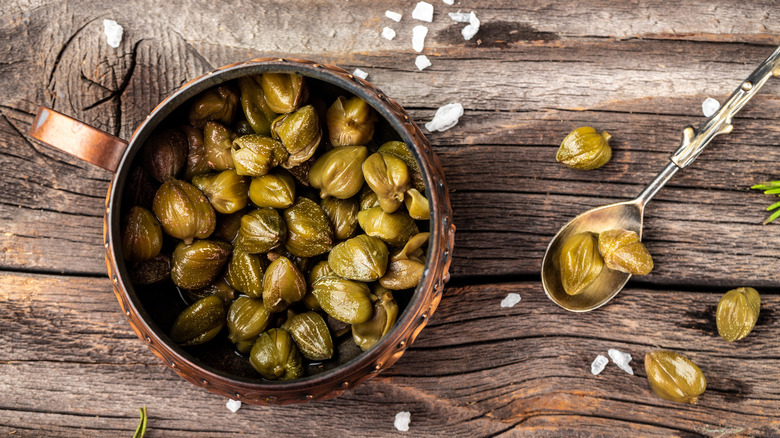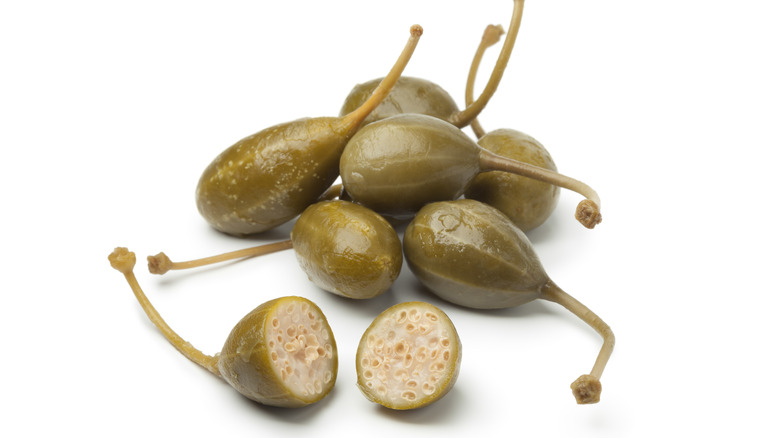The Real Difference Between Capers And Caper Berries
For many, capers may be no more than a rarely used inclusion in chicken or veal piccata, lending briny, tiny bursts of acidic flavor that help to brighten the lemony, saucy dish. You may have also become acquainted with them as a common accoutrement for bagels and lox. But have you ever tried a caperberry? It's similar to a caper, but much larger and with a slightly different flavor. If you've ever wondered what the difference is, you've come to the right place!
A caper is a pickled or cured unopened flower bud that grows throughout the Mediterranean, according to Cook's Illustrated. The caper plant is also grown in Asia, North Africa, Turkey, the Middle East and parts of the U.S. including California. It was actually mentioned as long ago as 2,000 BCE in ancient Mesopotamia (via MICHELIN).
Capers are preserved in a brine or in salt. Most supermarket capers are brine-cured in a vinegar mixture, while a somewhat drier salt-cured variation is often much more expensive (via Cook's Illustrated). They can range in size from tiny non-pareils to rather larger capotes and everything in between. In contrast, caperberries are actually the opened flower bud of the same plant. Caperberries are also cured but come with a stem that should be removed prior to eating (via The City Cook). Most capers are the size of a small pea, whereas caperberries are typically the size of a grape.
What do they taste like?
The flavor of both capers and caperberries is tart, vinegary, piquant, and slightly floral. They can be salty, so be sure to definitely drain before use and, if they're salt-cured, you may even want to rinse or briefly soak them (via Cook's Illustrated). Biting into a caper can also cause a 'burst' of flavor, which for some, can be overwhelming with its tang. A little goes a long way! They're often incorporated at the end of cooking or as a garnish, like in Giada de Laurentis' upgraded salmon recipe. Citrus pairs particularly well with capers, especially lemon. Some also make fried capers as a bright, crisp garnish. Caperberries, meanwhile, are more subtle and have a bit more texture to them, thanks to the seeds inside, per AllRecipes.
Capers are delicious in cold salads, pasta dishes like puttanesca, on pizza, and more. They complement fish well and are also sometimes chopped and stirred into creamy sauces, like remoulade or tartar. Caperberries are often chopped due to their size and they can disintegrate into sauces, which makes their pungent flavor a bit more subtle. They may act as cocktail garnishes, too — why not use a caperberry instead of an olive next time you make a martini?
AllRecipes further notes that capers are a good source of both fiber and vitamin K. However, use them sparingly if you're being careful about your sodium intake. All told, capers and caperberries are great pantry mainstays to add bright flavor to a multitude of dishes.

